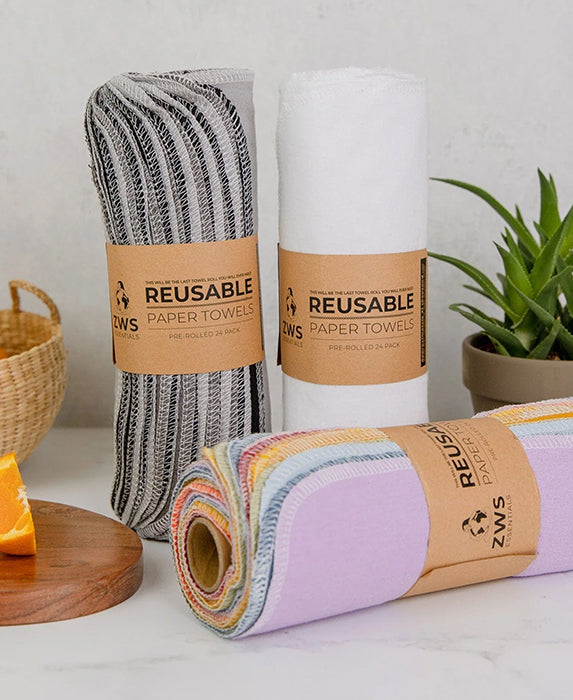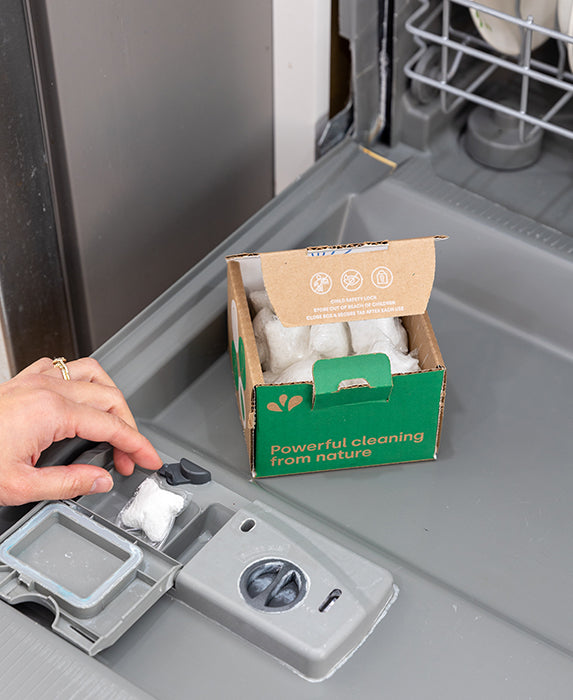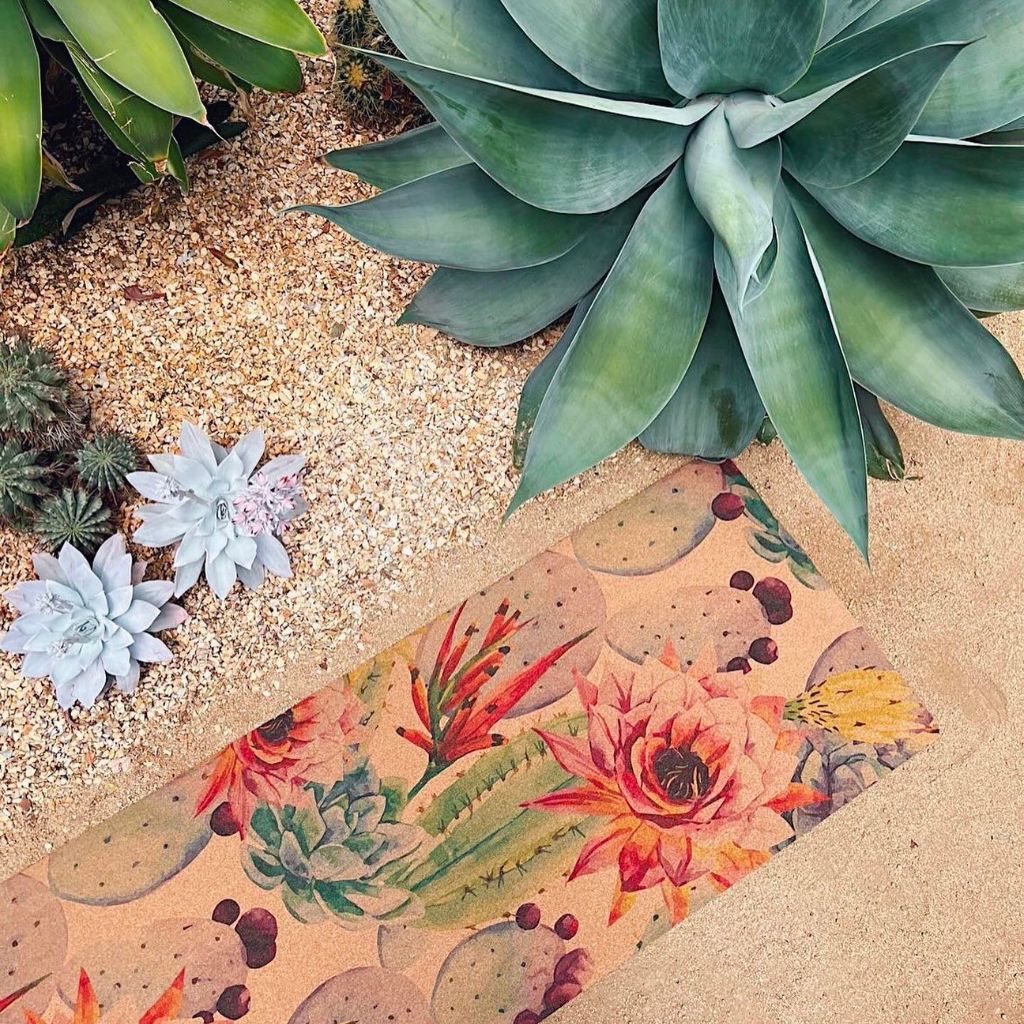Searching for an eco-friendly yoga practice doesn’t have to be daunting. For many practitioners (whether daily or occasional yogis), this past year has been a whirlwind. When many studios and fitness centers closed their doors (sometimes for good), many practitioners were left trying to figure it all out. From adjusting wellness routines to maintaining their healthy habits, it just wasn’t easy. This may have meant transitioning to virtual yoga classes, YouTube, or even jumping off yoga for a while. Maybe even for a long while.

However, it’s important to maintain as much mental, emotional and physical balance as possible, with everything around us changing daily. While we’ve had some time to figure out some good habits, read some new books, and (hopefully) spend a little time outside, it might still be daunting trying to navigate day-to-day living and still remember to breathe. Plus there’s figuring out how to do this while staying true to our eco-focused values.
Stay tuned to learn more about creating an eco-friendly yoga practice!
For your body
Crafting a yoga practice for the long-run
Something many people forget about is that yoga is meant to be sustainable. It’s meant to be good for you, and it’s meant to be practiced with ease beyond your 20s and 30s. That’s right — an eco-friendly yoga practice means more than buying the right mat and shopping for the right oils. This requires a kind and balanced approach to all the aspects of yoga, from asana (or movement) to pranayama (or breath work) and dhyana (or meditation) to create a nourishing recurring practice for the self. And while many get a kick out of a sweat-drenching hot yoga class that leaves even our yoga towels soaked (we know we do!), it’s important to know that kicking our own butt every day is probably not good for us. Why push yourself even harder when you’re pushed so hard everywhere else you go?
While considered a low-to-moderate activity like brisk walking or water aerobics, yoga is not immune to causing injury. In fact, the low intensity of yoga is what hides long-term and accumulating injuries that occur over a period of repeated practice. Sometimes this leads to chronic issues like joint instability and lower back problems. This is especially true on both extremes with beginners and “hard-core” yogis who don’t align themselves properly when transitioning from asana to asana or pump out chaturangas like nobody’s business without giving shoulder alignment a second thought.
Ways to switch up your movement routine

As a solution, try out different practices beyond the popular hot yoga and power vinyasa you were used to in-studio. A beautiful, and equally challenging practice can come in the form of yin yoga, which focuses on fascial stretching. The fascia is the connective tissue that envelopes and stabilizes every tissue, organ, bone, and nerve fiber in the body. Yin yoga supports fascial stretching when holding certain postures for a period ranging between 30 seconds and 25 minutes. Try holding a dragon pose (known as lizard pose in yang yoga) for 8 minutes and not shake uncontrollably!
Or, to allow the body to relax and find peace, a restorative practice might be just the thing for you. Known for its extensive use of props like blocks and bolsters, restorative yoga involves holding fewer postures for extended periods of time (usually around 2-5 postures for 12-30 minutes each) while being completely supported. Here, the focus is not on stretching the fascia or muscles or even on sweating, but on deep relaxation. Try a practice before bed and see if it doesn’t help you have a more restful sleep.
Remember the props!

Wearing the right clothing, drinking water, and using the proper equipment are a must for an eco-friendly yoga habit. However, they aren’t usually necessary for most practices and there are alternatives. For instance, textbooks are great blocks and bath towels are great for catching sweat. Read the ‘For the Planet’ section below to learn more about proper preparation for your yogic needs.
For your mind
Yogic texts and reading suggestions

In balancing the various parts of ourselves, our mind is just as important as the body and the spirit. One aspect of mind balance deals with educating ourselves in how our yoga practice is part of a greater movement to body and mind liberation. Yes, you heard that right. Your individual yoga practice is connected to the struggle for universal liberation and freedom of all people. To learn more, we recommend reading Skill in Action by Michelle Johnson or Restorative Yoga for Ethnic and Race-Based Stress and Trauma by Gail Parker. Both offer the opportunity to deepen your own personal practice through journaling exercises, thought-provoking passages, and tools for going beyond the mico-reality of physical yoga and into the macro-environment and universality of mind-body practice.
The importance of mental relaxation
It’s also important to calm our monkey minds (or citta vritti) by remembering the value of doing nothing. This means releasing our brains from thought overload and letting ourselves truly relax. A little yoga Nidra (or yoga sleep) is the perfect solution, as it offers the tools to practice focus in a state of deep relaxation without quite dozing off. Usually, you can do this practice sitting down in a lotus pose or with your back to the wall. You can even try it while lying down somewhere comfortably covered by a comforting blanket!
For your spirit
For many, a spiritual practice means svadhyaya (or self-study) and reading yogic texts like the Bhagavad Gita. However, it can also mean creating a safe and reflective space for yourself wherever you practice.
Incorporating oils and scents

A sustainable and eco-friendly yoga practice can also mean utilizing aromatherapy oils like chamomile or ylang-ylang during practice. Try massaging some on the temples before savasana, or using an oil diffuser throughout a meditation session with dimmed lights.
And as far as sustainability is concerned, be mindful of how and when you use your aromatherapy oils. Because they’re likely infused with essential oils, they’re more resource-intensive and have a higher ecological footprint. For instance, it takes about 600 pounds of rose petals to make a single ounce of rose essential oil! And while some herbs, fruits, and flowers are more abundant in their offerings, it’s still a resource-intensive process.
However, there are ways to be more mindful in your use of products containing essential oils. Use aromatherapy oils properly (dilution!) to minimize your eco and social footprint. Another way is simply honoring and expressing gratitude in your practice, and also educating yourself on the process of making essential and aromatherapy oils.
How technology can be helpful on the journey
You can use apps to meditate to bells or listen to ocean waves during a visualization practice to tune into your inner self during a calming practice. Tracking your practice can also help for self-reflection in figuring out where you need additional support, and what you can do to promote better mind-body unity. And if tech isn’t your thing, practicing outdoors is a great alternative, so the sounds of nature soothe you into a state of greater relaxation.
For the planet
When we come to the mat, we often come with very little. We have our water bottle, a hair tie, and a good attitude. However, this doesn’t mean our practice is the most eco-friendly yoga or socially sustainable option. Once we have our body, mind, and spirit taken care of, we have to remember the planet. This includes everything from the materials you use to where you practice and what studios or teachers you support.
Having the right supplies
To begin, finding the right eco-friendly yoga mat is crucial for good practice. With so many companies out there creating beautiful mats made with cork, bamboo, recycled tires, and more, there’s plenty to choose from. Oftentimes, it’s best to choose one based on the type of practice you’ll engage in, which determines the best length, thickness, style, and material of your mat. Some other questions to ponder are whether or not you plan on carrying the mat around (which suggests the need for a mat that rolls up tightly or a yoga bag) and whether you find your hands slip often during practice (which might direct you to use a cork mat or adding a yoga towel to your repertoire).
When searching for the right clothing, it depends on the type of yoga practice you’ll be doing. For example, if you’re planning on a 60-minute power vinyasa flow, you might want a pair of snug leggings and a muscle shirt or sports bra, but for a restorative practice, a simple t-shirt or even pajamas will do the trick!

A greener outdoor practice
Of course, a greener and eco-friendly yoga routine can be taken outside of your bedroom. We can’t have a conversation about yoga without talking about different props, platforms, and tools out there to elevate your practice and promote deep healing and relaxation. A neat one for yogis who love taking their mat everywhere they go and busting out a tree pose at the park or practicing lotus at the beach is a portable platform board! Other tools to elevate your stretching game are yoga straps for a yummy happy baby pose, or massage balls or roller for muscle recovery post-asana practice or on recovery days.
Reminder: leave no trace
When it comes to location, Leave No Trace comes to mind. With all the time we spend indoors nowadays, any second we get to breathe fresh air and spend time outside is a blessing. Of course, this doesn’t mean doing so without a plan. If (and hopefully when) you choose to practice anywhere outside of your home, use these tips to help you out:
- Bring a bag for compost, recyclables, and trash so you don’t leave anything behind
- Pack the right sunscreen and bug spray so your skin protection doesn’t end up causing harm to coral reefs or contain toxins that harm your skin
- Carry a reusable water bottle (filled, please!) so you’re not tempted to buy plastic water bottles on the go
- Remember to stick to durable and hardy surfaces when practicing so you minimize your impact on the land (so sticking to flat grassy areas at the park and off of erosion-protecting dunes at the beach)
- Bring a friend with you so you’re not alone. Not only is this safer all around, but it can also be plenty of fun. Yay to accountability partners!
Conclusion
What’s good for the planet is good for the people (and creatures) living on it too. When shopping for your next purchase or signing up for a new yoga studio, think about and research what the company is all about. For clothing, are their materials sourced sustainably, and are their employees paid fair wages? At EarthHero, we’re very meticulous about who we showcase in our marketplace, but if you’re shopping for a brand you’re unsure about, drop us a line. And if you plan to join a studio, what kinds of classes do they offer? Are their teachers diverse and welcoming and are their classes welcoming to all folks with different abilities, body sizes, and backgrounds? Are the values you hold reflected in the companies and spaces you support?
Now you know how to balance your yoga practice sustainably. Time to go out there and show yourself a little love. Let us know how it goes by tagging us on social media or leaving us a comment.










